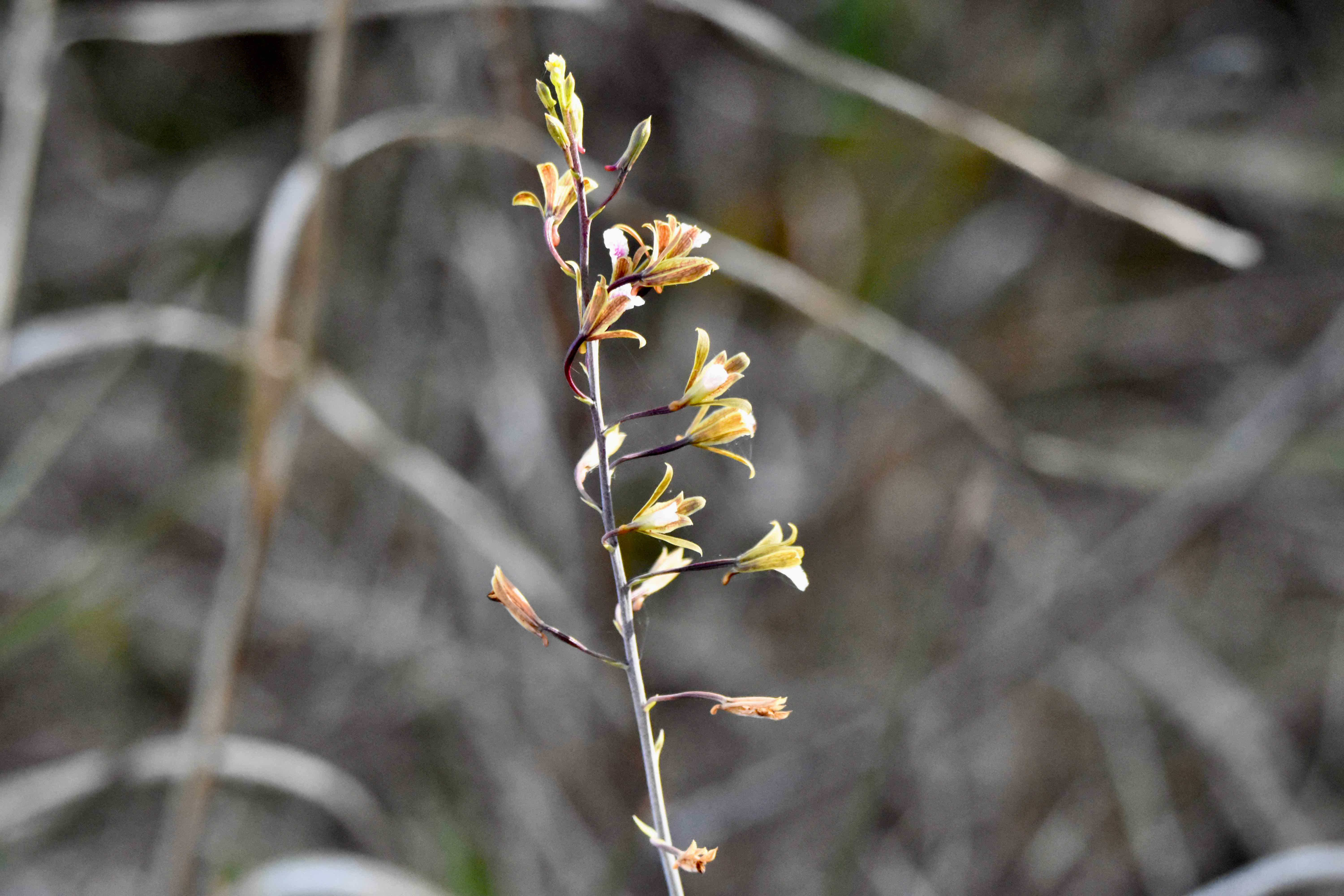
Chinese crown orchid, photographed at Cypress Creek South Natural Area, Jupiter, Palm Beach County, in March 2018.
The next exotic plant to menace the wilds of Florida might be an orchid, of all things. This guy, Eulophia graminea, called by some the Chinese crown orchid.
It is a native of tropical and subtropical parts of Asia, from Pakistan to India, Nepal, China, Southeast Asia and the Ryuku Islands of Japan. Somehow it made its way into the wilds of Florida, discovered growing in a few neighborhoods in Miami-Dade County in 2007.
This plant was so new and so rare in the United States that when we first came across it in 2015, most sources we checked didn't have a common name for it, including the Institute for Regional Conservation in Delray Beach. The U.S. Department of Agriculture's PLANTS database had almost no info on it. The North American Orchid Conservation Center offers two names: Chinese crown orchid and grass-leaved eulophia.
When we updated this page in September 2025, the PLANTS database still had almost no information on the Chinese crown orchid, not even its existence in Florida.
The first thing to know is that this is a ground orchid. In its native range, the Chinese crown orchid grows in a wide variety of open habitats, including grasslands and even beaches. In Florida, it was orginally found in places that had been mulched with wood chips, so there was some thought that this was a connection as to how it spreads. But it since has been seen growing in a wide range of habitats sans mulch, including the plant in the photo above.
It is a Franken-plant of sorts. At the base, the stem resembles the kind of bulb that might be found on a lily, but it's not a bulb. It's close enough in appearance to one that it's called a pseudobulb, and the first leaves to emerge from it are very much lily-like. From the stem, a single flower stalk, called an inflorescence, shoots up as high as five feet, by some references, though the plants we've seen have been much shorter, maybe 18 inches max. Along the stalk are small, tongue-like flowers, white on the outside, pink or violet in the center. A single stalk can have as many as 60 flowers.
The stalk also has leaves that at a glance resemble thorns. The flowers attract a few pollinators and ultimately produce dust-like seeds that disperse with the wind. Originally, it was believed that we humans spread the orchid by using mulch contaminated with pseudobulbs, but it's now found in a wide range of habitats, including rockland hammocks, pine rocklands, maritime hammocks, pine flatwoods, coastal strands, and cypress strands. We've seen it growing in settings far into the woods, so to speak.
In the years since it was first discovered, the Chinese crown orchid has expanded its range as far north as Brevard County and west to Collier, Lee and Manatee counties, and south into the Keys. According to the Florida Invasive Species Council, formerly known as the Florida Exotic Pest Plant Council, it's been found in 13 Florida counties. That number has likely grown. The FIPC classified it as a Category II invasive — a sort of watch list for exotic plants that are rapidly spreading statewide — in 2013. The problem with Chinese crown orchid is its tendency to form large patches that block out other plants. The plant is not on any "prohibited" lists, however.
We first found it growing in Lantana Scrub Natural Area, the site of the old A.G. Holley state hospital in Palm Beach County back in June 2015. The area was covered with wood chips, most likely left over from mechanical cuttings used in lieu of prescribed burns to keep vegetation from overgrowing. We also found it growing in our Delray Beach backyard in January 2016 in an area that we keep mulched. Since then, we've seen it in multiple places throughout the region, sometimes in areas that are mulched, sometimes not.
Experts say Chinese crown orchid grows in places with colder temperatures than Florida, so it's anyone's guess how far north it will travel.
Chinese crown orchid is a member of Orchidaceae, the orchid family.
Cypress Creek South Natural Area






